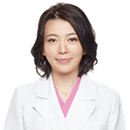
Hello everyone. In this final essay of the series, I would like to talk about regenerative treatment, including cell therapy and prime aging.
Regenerative therapy is a treatment of repairing damaged tissues and recovering its functions by using “power of cells” that is inherent to our body. Regenerative treatment may cause no serious adverse effect since it is nontoxic. Additionally, it is expected to improve the symptoms of at- present incurable diseases that haven’t been elucidated by the contemporary medical science.
Have you ever heard of the word “exosomes”? Exosomes are small granules secreted by cells. They were considered to be “waste from cells” in the past. However, exosomes have recently been found to play an important role in cell-to-cell communication. For example, cancer cells release a greater number of exosomes than normal cells, and are also known to contain specific DNA and proteins. These characteristics enable cancer cells to be detected at early stages, such as before symptoms onset, by examining very small amount of blood. Furthermore, exosomes are closely involved in cancer metastasis. Exosomes released from malignant cancer cells affect less malignant cells to produce new blood vessel, and to suppress immune cell activities. These activities promote to create the environments where is optimal for these malignant cells to survive. On the contrary, exosomes released from normal cells help repairing damaged cells by creating environments which is more suitable for them. As mentioned above, it has been elucidated that exosome plays a very important role, and is the key to cell regeneration treatment, including stem cell therapy.
Stem cells develop into various types of cells, in order to replace damaged cells, or to make up for decreased cells due to various reasons such as aging, injury, or inflammation. This phenomenon is just like as branches come out of the trunk of the tree, send out leaves, bloom flowers, and bear fruits. Pancreatic cells of the pancreas that secrete insulin, while skin cells comprise skin texture, and neurons make up nerves. These cells have their specific functions. For example, the knee pain of osteoarthritis is caused by reduced chondrocytes and hyaluronic acid. These substances play the role of cushioning in the joint. They gradually decrease due to over-strain and strain on the knee joint over accumulated years, eventually resulting in onsets of inflammation and strong pain. In these cases, the pain is sometimes alleviated by suppressing inflammation using stem cell culture supernatant, since it is abundant of exosomes released from stem cells. However, chondrocytes cannot be still regenerated from this supernatant because it does not contain actual cells. Furthermore, tens of millions of kinds of proteins, including exosomes, contained in the supernatant greatly vary depending on the culturing conditions or host individuals. Regeneration treatment of cartilage requires material cells, therefore, stem cells collected from the patient need to be directly implanted into the joints by a local injection. Stem cells collected from other person causes rejection when implanted. Future technology will prevent this rejection, enabling transplant treatment using stem cells from other persons. It means these collected stem- cells are general- purposes, and can be used as a pharmaceutical agent.
Approximately 20 billion cells die, and similar number of cells are newly produced in our body everyday. Based on this fact, we can say enhancing activities of each cell and maintaining their functions are the key to staying youthful and energetic. State-of-the-art cell therapy maximizes the regeneration ability of the body, activates cells, and helps maintaining their functions. Above all, however, our everyday life determines our own health. It is the bedrock for good health to take healthy foods and supplements, to exercise properly, to get good sleep, and stay free from stress. Even if visible change is not found soon, the accumulation of healthy life will lead to healthy longevity in 10 years and 20 years after. I hope that everyone will enjoy healthy daily life everyday, while keeping this fact in your mind.

Midori Meshitsuka M.D.
M Regenerative Clinic Director
2008 Graduated from Peking University Health Science Center (China)
2009 Obtained Chinese medical license
2014 Obtained Japanese medical license
2019 M Regenerative Clinic Director
Dr. Midori completed her internship at Harvard medical school Massachusetts General Hospital and Peking University Third Hospital. She then worked at the University of Tokyo Hospital, Tokyo Women’s medical University. In 2019 she joined her family practice, established M Regenerative Clinic as Director.
・No.6 Prime aging as medical treatment (exosomes and cell treatment)
・No.5 Functions of longevity genes (Telomere and Sirtuins)
・No.4 My experiences of prime aging treatment in overseas
・No.3 Prime aging and intestinal microflora
・ Prime Aging and Nutrition (Protein, Fat, Carbohydrate, Dietary Fiber, Vitamins, Minerals)
・No.1 What is prime aging?